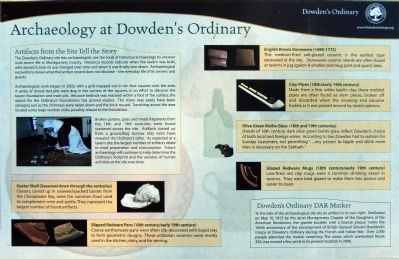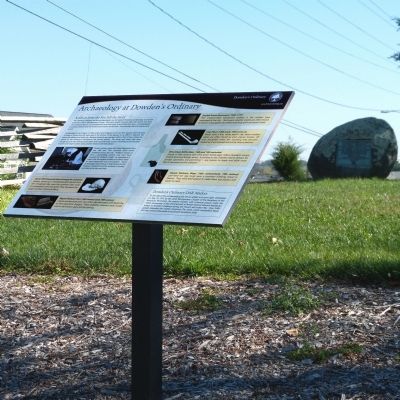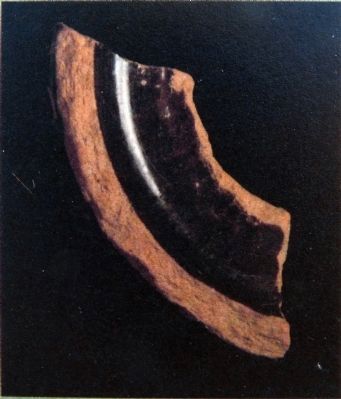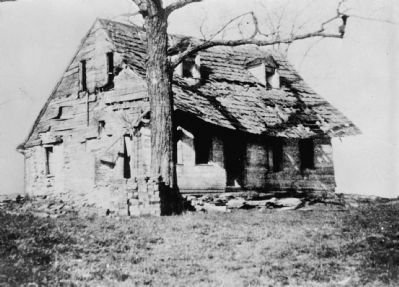Clarksburg in Montgomery County, Maryland — The American Northeast (Mid-Atlantic)
Archaeology at Dowden's Ordinary
Artifacts from the Site Tell the Story
The Dowden's Ordinary site tells archaeologists use the tools of historical archaeology to uncover rural tavern life in Montgomery County. Historical records indicated when the tavern was built, who owned it, how its use changed over time and when it was finally torn down. Archaeological excavations reveal what the written record does not disclose -- everyday life of its owners and guests.
Archaeological work began in 2002, with a grid mapped out in ten foot squares over the area. A Series of shovel test pits were dug in the corners of the squares, in a effort to discover the tavern foundation and trash pits. Because bedrock was reached a within a foot of the surface, the search for the Ordinary's foundations has proved elusive. The stone may easily have been salvaged, just as the chimneys were taken down and the brick reused. Trenching across the area located some large random rocks, possibly related to the foundation.
Broken pottery, glass and metal fragments from the 18th and 19th centuries were found scattered across the site. Artifacts tossed up from a groundhog burrow may even have revealed the Ordinary's cellar. As expected at a tavern site, the largest number of artifacts relate to meal preparation and consumption. Future archaeology will continue to help determine the Ordinary's footprint and the varieties of human activities at the site over time.
Erected by Montgomery Parks.
Topics. This historical marker is listed in these topic lists: Colonial Era • Industry & Commerce. A significant historical year for this entry is 2002.
Location. 39° 14.205′ N, 77° 16.661′ W. Marker is in Clarksburg, Maryland, in Montgomery County. Marker can be reached from North Frederick Road (Maryland Route 355) just south of Stringtown Road. Touch for map. Marker is in this post office area: Clarksburg MD 20871, United States of America. Touch for directions.
Other nearby markers. At least 8 other markers are within 3 miles of this marker, measured as the crow flies. Dowden's Ordinary: A French & Indian War Site (a few steps from this marker); Tavern Life at Dowden's Ordinary (a few steps from this marker); Dowden’s Ordinary (within shouting distance of this marker); Dowden's Ordinary: The Elephant Comes to Clarksburg (within shouting distance of this marker); Welcome to Froggy Hollow (approx. 1.9 miles away); Waters' Mill (approx. 2˝ miles away); A Real Field of Dreams (approx. 2.7 miles away); Black Hill Gold Mine (approx. 2.9 miles away). Touch for a list and map of all markers in Clarksburg.
Additional keywords. Archaeology
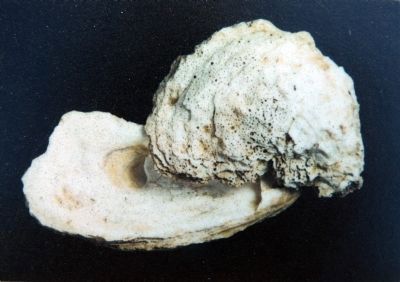
Photographed By Allen C. Browne, October 20, 2013
3. Oyster Shells (Seasonal down through the Centuries)
Oysters, carted up in seaweed-packed barrels from the Chesapeake Bay, were common food used to complement wine and spirits. They represent the largest number of found artifacts.Close-up of photo on marker
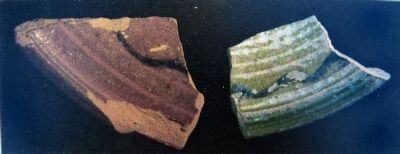
Photographed By Allen C. Browne, October 20, 2013
4. Slipped Redware Pans (18th century/early 19th Century)
Coarse earthenware pans were often slip-decorated with liquid clay to form geometric designs. These utilitarian ceramics were mostly used in kitchen, dairy, and for serving.Close-up of photo on marker
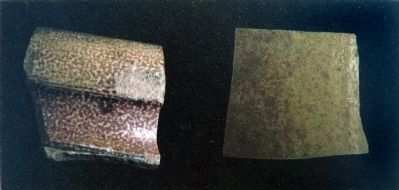
Photographed By Allen C. Browne, October 20, 2013
5. English Brown Stoneware (1690-1775)
This medium-fired salt-glazed ceramic is the earliest type excavated at the site . Stoneware ceramic sherds are often found at taverns in jug (gallon & smaller) and mug (pint and quart) sizes.Close-up of photo on marker
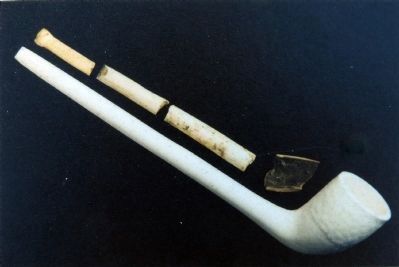
Photographed By Allen C. Browne, October 20, 2013
6. Clay Pipes (18th/early 19th century)
Made from a fine, white kaolin clay, these molded pipes are often found as stem pieces, broken off and discarded when the smoking end became fouled, as it was passed around by tavern patrons.Close-up of photo on marker
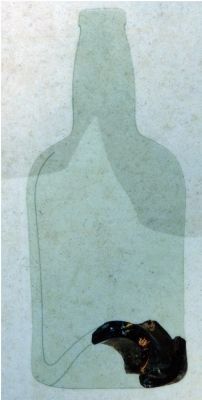
Photographed By Allen C. Browne, October 20, 2013
7. Olive Green Bottle Glass (18th and 19th centuries)
Sherds of 18th century dark olive green bottle glass reflect Dowden's choice of both local and foreign wines. According to law, Dowden had to restrain his Sunday customers not permitting "...any person to tipple and drink more than necessary on the Sabbath."Close-up of photo on marker
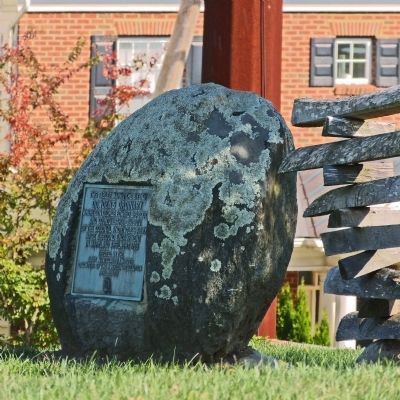
Photographed By Allen C. Browne, October 20, 2013
9. Dowden's Ordinary DAR Marker
To the side of the archaeological site sits a artifact in its own right. Dedicated on May 10, 1915 by the Janet Montgomery Chapter of the Daughters of the American Revolution, the granite boulder with a bronze plaque marks the 16oth anniversary of the encampment of British General Edward Braddock's troops at Dowden's Ordinary during the French and Indian War. over 2,000 people attended the marker ceremony. The stone, which overlooked Route 355, was moved a few yards to its present location in 2006. (Sidebar on Marker)
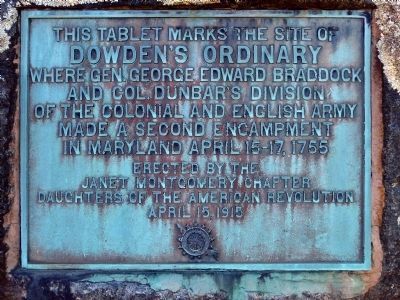
Photographed By Allen C. Browne, October 20, 2013
10. DAR Plaque
Dowden's Ordinary
Where Gen. George Edward Braddock
and Dunbar's Division
of the Colonial and English Army
made a second encampment
in Maryland April 15-17, 1755
Erected by the
Janet Montgomery Chapter
Daughters of the American Revolution
April 15, 1915
(n.b. General Braddock's first name was Edward not George.)
Credits. This page was last revised on September 22, 2019. It was originally submitted on October 27, 2013, by Allen C. Browne of Silver Spring, Maryland. This page has been viewed 733 times since then and 14 times this year. Photos: 1, 2, 3, 4, 5, 6, 7, 8, 9, 10, 11. submitted on October 27, 2013, by Allen C. Browne of Silver Spring, Maryland. • Bill Pfingsten was the editor who published this page.
